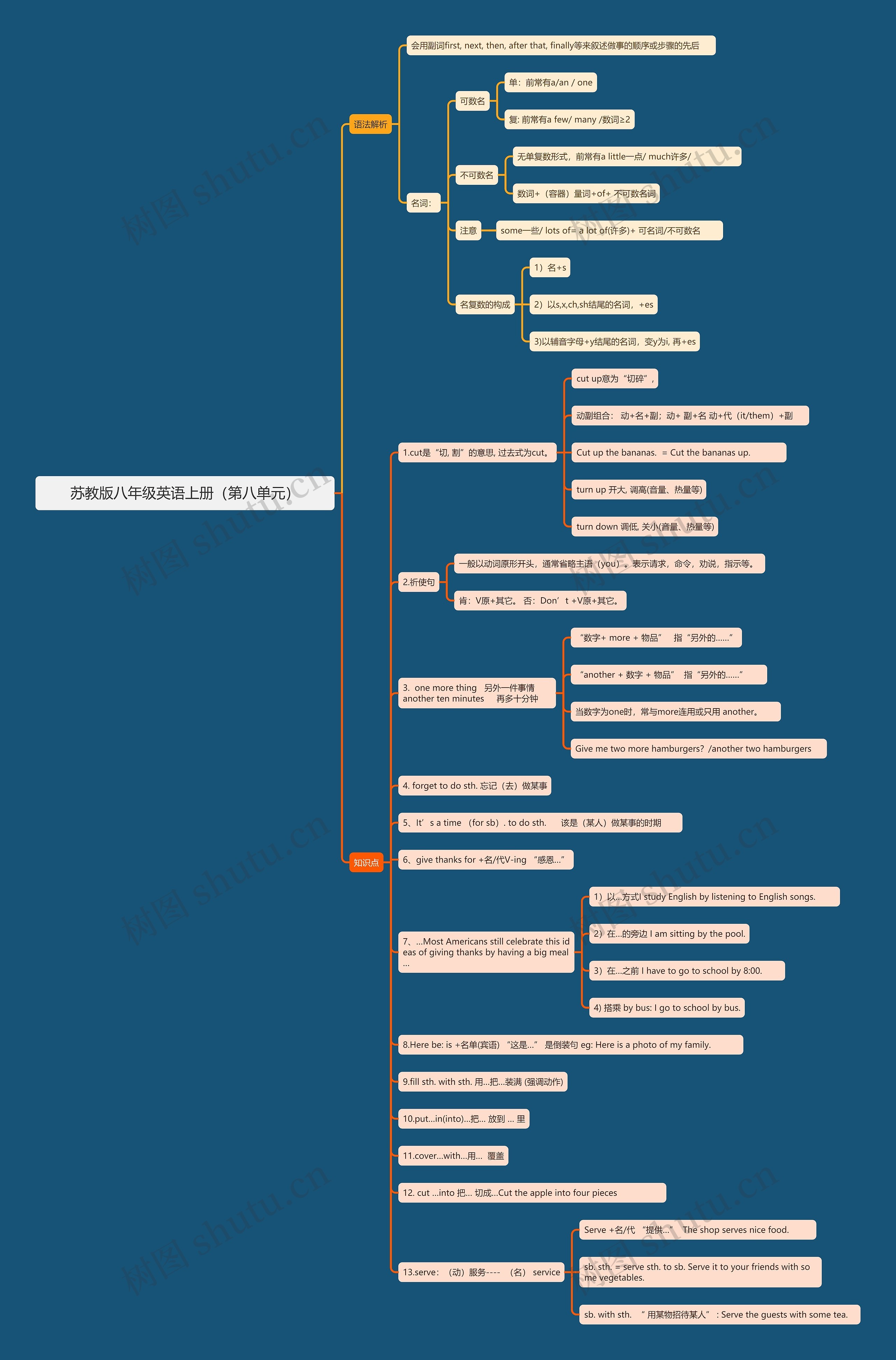1.cut是“切, 割”的意思, 过去式为cut。
动副组合: 动+名+副;动+ 副+名 动+代(it/them)+副
Cut up the bananas. = Cut the bananas up.
2.祈使句
一般以动词原形开头,通常省略主语(you)。表示请求,命令,劝说,指示等。
3. one more thing 另外一件事情 another ten minutes 再多十分钟
“another + 数字 + 物品” 指“另外的……”
当数字为one时,常与more连用或只用 another。
Give me two more hamburgers?/another two hamburgers
4. forget to do sth. 忘记(去)做某事
5、It’s a time (for sb). to do sth. 该是(某人)做某事的时期
6、give thanks for +名/代V-ing “感恩…”
7、…Most Americans still celebrate this ideas of giving thanks by having a big meal…
1)以…方式I study English by listening to English songs.
2)在…的旁边 I am sitting by the pool.
3)在…之前 I have to go to school by 8:00.
4) 搭乘 by bus: I go to school by bus.
8.Here be: is +名单(宾语) “这是…” 是倒装句 eg: Here is a photo of my family.
9.fill sth. with sth. 用…把…装满 (强调动作)
10.put…in(into)…把… 放到 … 里
12. cut …into 把… 切成…Cut the apple into four pieces
13.serve:(动)服务---- (名) service
Serve +名/代 “提供…” The shop serves nice food.
sb. sth. = serve sth. to sb. Serve it to your friends with some vegetables.
sb. with sth. “ 用某物招待某人” : Serve the guests with some tea.

